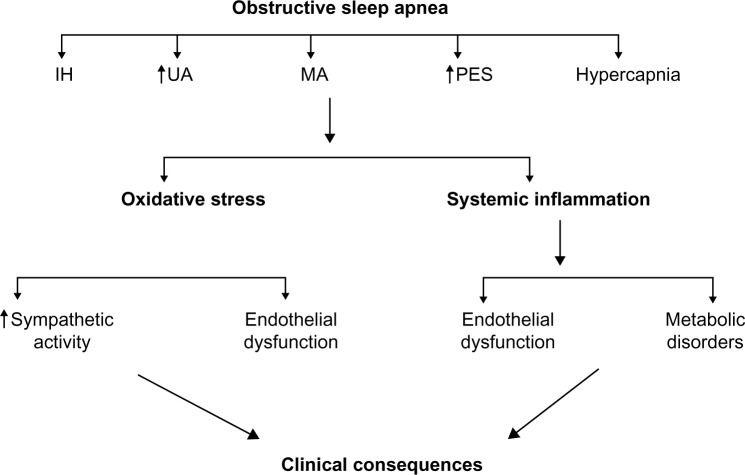Figure 1.
Schematic diagram showing the mechanisms leading to clinical consequences of obstructive sleep apnea.
Notes: During OSA, intermittent cycles of a fall in oxygen saturation and reoxygenation, and a rise in UA and esophageal pressure, MA, and hypercapnia occur. As a consequence, oxidative stress and systemic inflammation take place, inducing an increase in sympathetic tonus, endothelial dysfunction, and metabolic alteration, overall implicated in the majority of OSA consequences.
Abbreviations: OSA, obstructive sleep apnea; UA, pharyngeal resistance; MA, microarousal; IH, intermittent hypoxia; PES, esophageal pressure.

